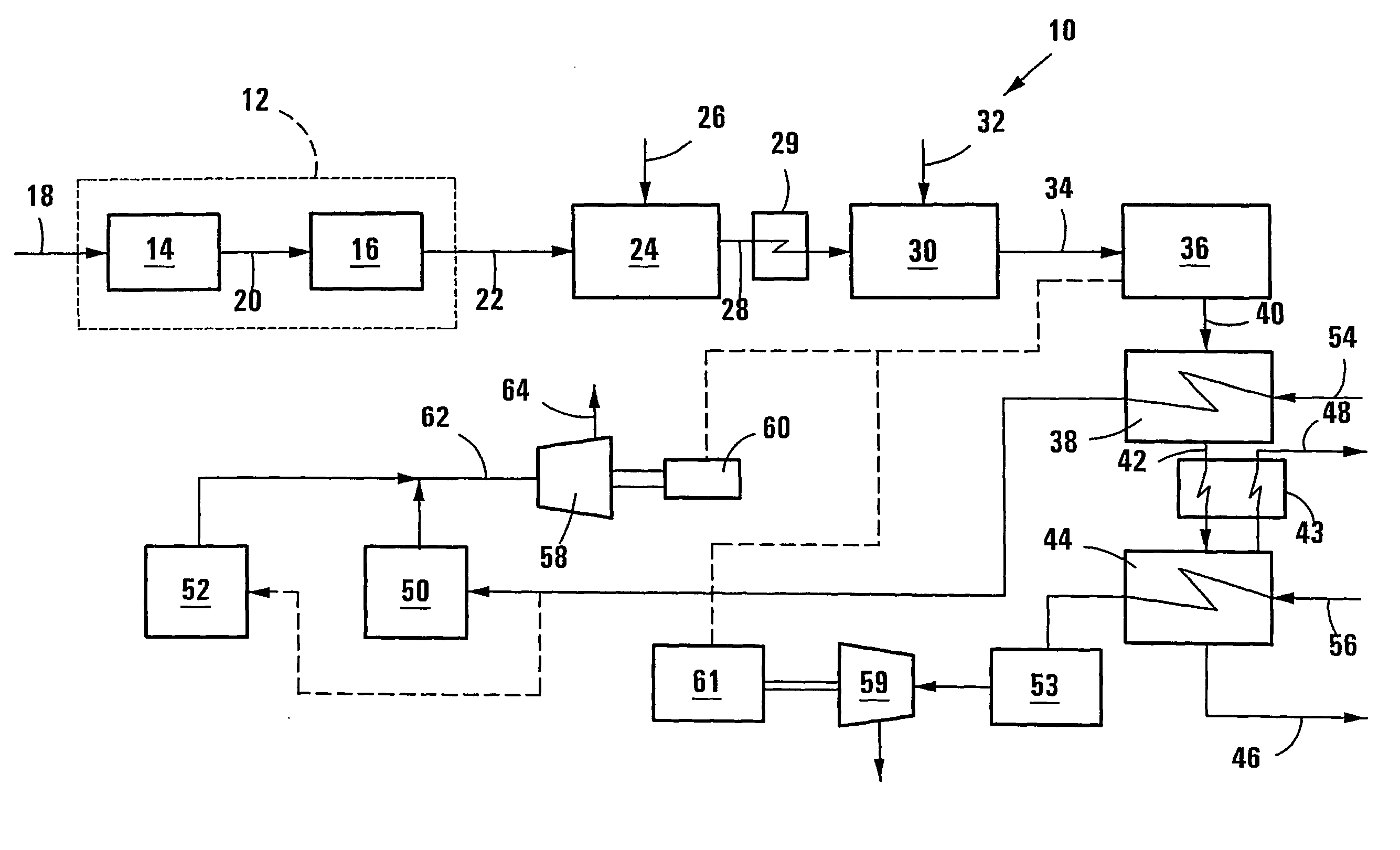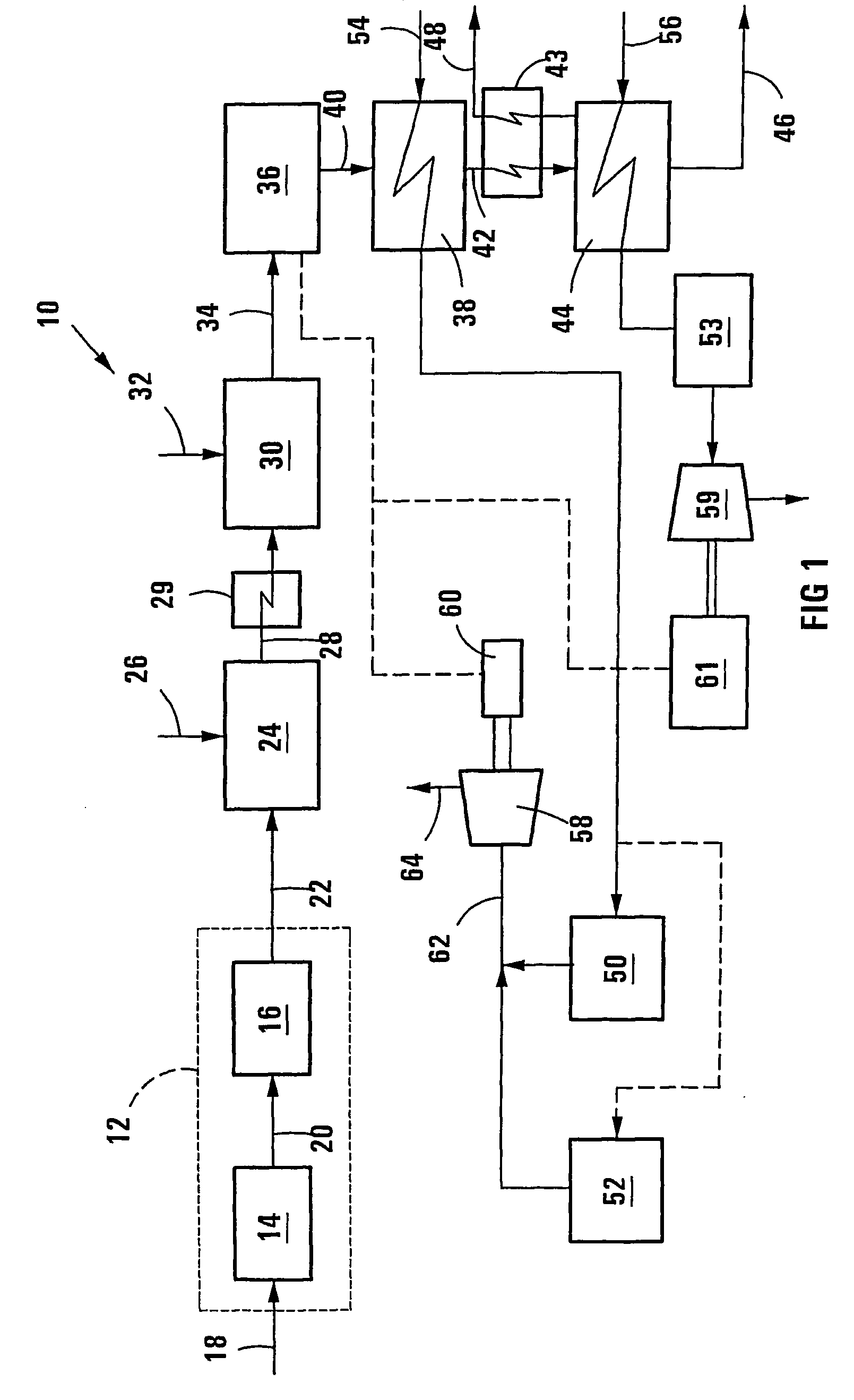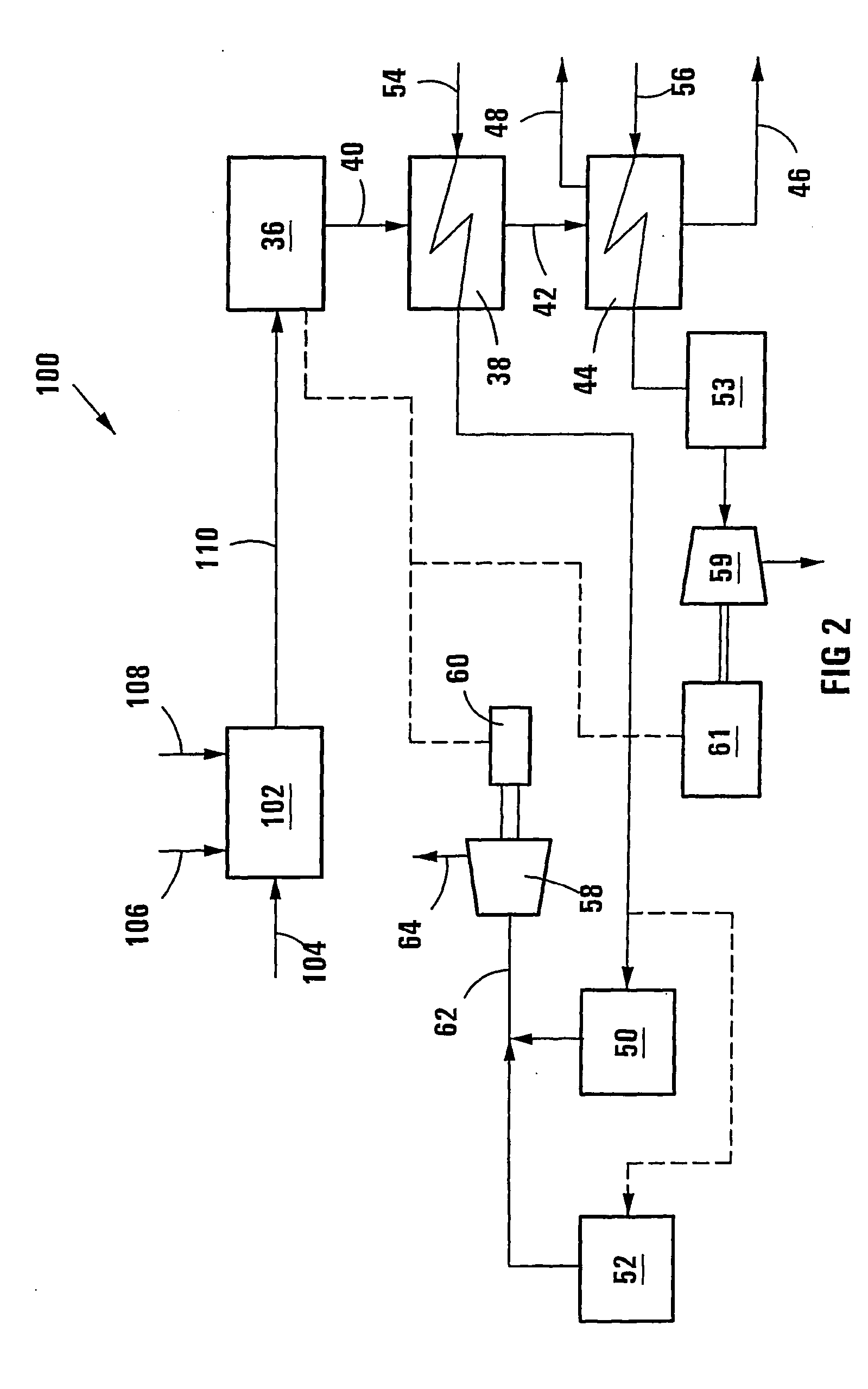Production of synthesis gas and synthesis gas derived products
a technology of synthesis gas and derived products, which is applied in the direction of gasification process details, inorganic chemistry, combustible gas production, etc., can solve the problems of about the cost of oxygen production for use in synthesis gas production, and achieve the effects of less electrical energy, low cost and low cos
- Summary
- Abstract
- Description
- Claims
- Application Information
AI Technical Summary
Benefits of technology
Problems solved by technology
Method used
Image
Examples
example 2
[0062] In Example 2 a plasma reformer is used to heat, reform and equilibrate the raw synthesis gas at a temperature higher than that in the autothermal reformer, similar to the process shown in FIG. 1 of the drawings. For the purposes of this simulation an autothermal reformer operating temperature of 1050.degree. C. and a plasma reformer temperature of 1100.degree. C. were used.
[0063] The same hydrocarbonaceous feedstock composition was used as shown in Table 1 and a feedstock flow rate which is the same as for the simulation of Example 1, was used.
[0064] The pre-reformed hydrocarbonaceous gas feedstock is autothermally reformed with oxygen. The simulated process includes controlling the ratio of oxygen to pre-reformed gas to control the temperature of the raw synthesis gas produced to 1050.degree. C. The raw synthesis gas is further reformed in the plasma reformer by increasing the temperature of the raw synthesis gas in an electrically generated plasma torch to a temperature of ...
example 3
[0068] In Example 3 a plasma reformer is used to heat, reform and equilibrate the raw synthesis gas at a temperature higher than that in the autothermal reformer, similar to the process shown in FIG. 1 of the drawings. For the purposes of this simulation an autothermal reformer operating temperature of 900.degree. C. and a plasma reformer temperature of 1100.degree. C. were used.
[0069] The same hydrocarbonaceous feedstock composition was used as shown in Table 1 and a feedstock flow rate which is the same as for the simulation of Example 1, was used.
[0070] The pre-reformed hydrocarbonaceous gas feedstock is autothermally reformed with oxygen. The simulated process includes controlling the ratio of oxygen to pre-reformed gas to control the temperature of the raw synthesis gas produced to 900.degree. C. The raw synthesis gas is further reformed in the plasma reformer by increasing the temperature of the raw synthesis gas in an electrically generated plasma torch to a temperature of 11...
example 4
[0075] In Example 4 a plasma reformer is used to heat, reform and equilibrate the raw synthesis gas at a temperature higher than that in the autothermal reformer, similar to the process shown in FIG. 1 of the drawings. For the purposes of this simulation an autothermal reformer operating temperature of 900.degree. C. and a plasma reformer temperature of 1100.degree. C. were used.
[0076] The hydrocarbonaceous feedstock composition is as shown in Table 1 but the feedstock flow rate is increased by 10.4% over the base case of Example 1 so as to more fully utilize the operating capacity of an existing air separation unit. This allows an extra full-size Fischer-Tropsch synthesis train to be included for 9% less oxygen consumption than the base case of Example 1.
[0077] The pre-reformed hydrocarbonaceous gas feedstock is autothermally reformed with oxygen. The simulated process includes controlling the ratio of oxygen to pre-reformed gas to control the temperature of the raw synthesis gas p...
PUM
| Property | Measurement | Unit |
|---|---|---|
| temperature | aaaaa | aaaaa |
| temperature | aaaaa | aaaaa |
| temperature | aaaaa | aaaaa |
Abstract
Description
Claims
Application Information
 Login to View More
Login to View More - R&D
- Intellectual Property
- Life Sciences
- Materials
- Tech Scout
- Unparalleled Data Quality
- Higher Quality Content
- 60% Fewer Hallucinations
Browse by: Latest US Patents, China's latest patents, Technical Efficacy Thesaurus, Application Domain, Technology Topic, Popular Technical Reports.
© 2025 PatSnap. All rights reserved.Legal|Privacy policy|Modern Slavery Act Transparency Statement|Sitemap|About US| Contact US: help@patsnap.com



